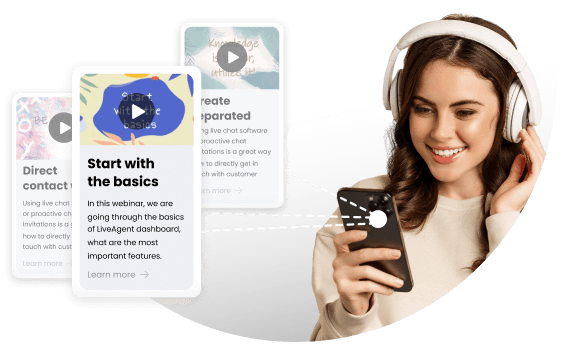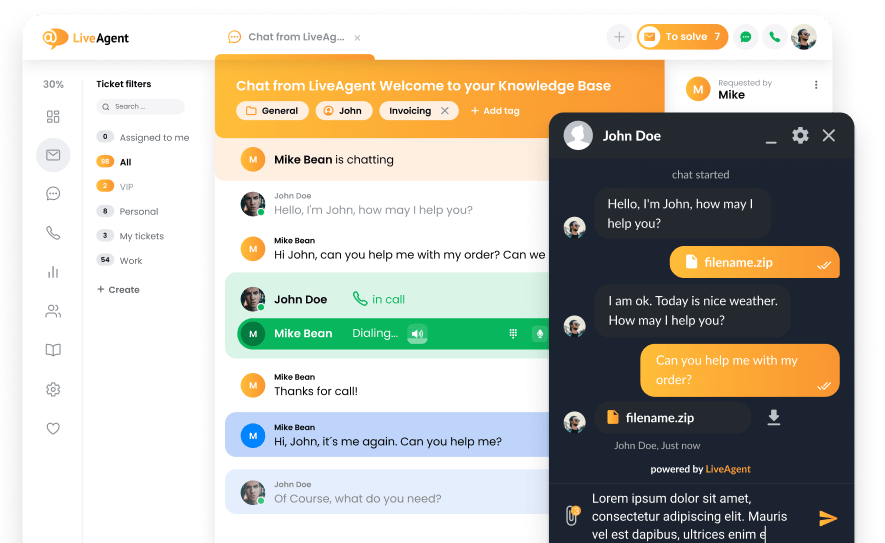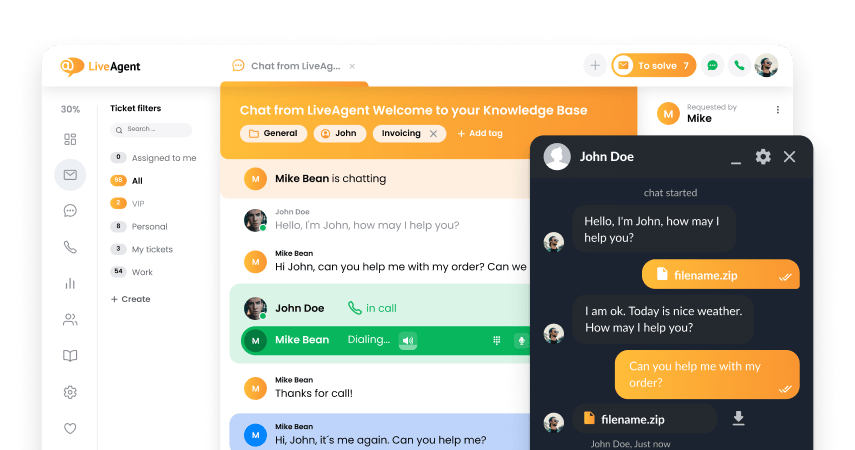- Videos
- Everything you need to know about Paid Media Funnels
Everything you need to know about Paid Media Funnels
Learn about the significance of paid media in digital marketing, the different stages of the marketing funnel, and the various types of paid media advertising, including PPC, influencer, social media, podcast, video, display, and Amazon advertising. Discover the benefits of the paid media advertising funnel and how to guide and nurture potential customers at every stage of the journey.


Everything you need to know about Paid Media Funnels
Topics
- marketing strategies
- social media marketing
- consumer behavior
Video summary
The video discusses various marketing strategies and techniques to increase brand visibility and customer engagement. It covers the importance of social media marketing, content creation, and influencer partnerships in reaching a wider audience and driving sales. The speaker also emphasizes the need to adapt to changing consumer behavior and trends to stay competitive in the market.
Video transcript
Ask any marketer and you will hear that marketing works through two platforms.
One is the old school method of brand
building through broad reach vehicles like TV and radio.
The other is the data driven channel
followed by young marketers who are a product of the digital era.
Even if you're not aware of it,
you've passed through one of these marketing funnels at some point in time.
What's good, guys? It's Ben here from Neighbourhood,
where we help businesses find, sell to and keep their people.
Paid Media funnels are strategically placed
to drive traffic, attract new customers and enhance growth rates.
Today we are going to dive into the concept of the marketing funnel
and the significance of paid media in the digital world.
So what are marketing funnels?
In simple words, a marketing funnel is a pathway that a customer follows
from becoming aware of your brand to the ultimate purchase of products.
Something to keep in mind is that the customer purchase decision
process takes time depending on the person making the decision.
The pathway should be carefully designed to nurture potential customers and guide
them through the process of the product purchase after purchase.
The goal is to convince them to become
a long time repurchaser and a brand advocate.
The marketing funnel can vary depending
on the nature of the industry and the scope of the business.
But it can be broken up into four stages
awareness, consideration, conversion and engagement.
Awareness is the first and probably the most important stage as it's when
unaware customers first hear about your brand.
This can be through social media,
blog posts, advertisement, or even good old fashioned word of mouth.
It's all about product visibility.
One thing to keep in mind is that it is
highly unlikely that one piece of content will impact sales on its own.
A buying decision can actually be weeks or months away.
Paid advertisements can play a key role in awareness generation and can
potentially speed up your marketing efforts.
Next is the consideration phase.
This is the stage where your paid media strategies are getting some more traction.
You're starting to stand out and rise
above the competition and the customer is actually interested in your product.
The customer will show additional purchase intent, conduct some more research on your
various digital channels and start to think about purchase.
Your next step is to deliver detailed
information about your products and services.
This will help nudge your prospective
customers along their purchase decision journey.
The conversion stage is when the customer takes action.
This can be buying a product or service or any other form of conversion.
Offering incentives and discounts can be used to encourage customers.
At this stage, the trick is to not push
the customer, but to continue to work on them by giving them gentle nudges.
Finally, we have the engagement stage.
While many brands fail to focus on this
area, this is a crucial step that can't be ignored.
It's all about keeping your current customers and converting them into a loyal
customer base that can go on to promote your brand.
If you don't already have this stage established, consider it an essential step
in keeping the customer aware and engaged after the purchase is made.
Keep in mind that the target of the funnel is not to increase conversion rates,
but to improve the overall customer experience while nurturing relationships
with these customers and developing brand image.
But sometimes it's not this simple.
A customer journey isn't always a linear process.
Each customer is unique and so are their
journeys. So they might skip a stage or two
stages can merge into one.
But having a full funnel marketing strategy that targets customers at every
stage of the buyer's journey is extremely important.
This will help you meet the customer no matter where they are on the journey.
But you may be asking, how do you go about developing a funnel strategy?
There are a few key points that you need to keep in mind for developing the right
funnel strategy through your paid media channels.
Firstly, you need to identify the primary
sources or channels that will lead the customer to discovering your brand.
Are they discovering you through social media like Instagram or TikTok?
Or are they actively searching for your products and services on Google?
Next, you need to think about
the milestones or touch points for each stage of the funnel.
These can include website visits, emails, form submissions, and purchase.
You then need to plan about the offers
that you can make to your customers during the journey.
This can include offering a free trial
of your products, a discount code, or even free shipping.
You also need to estimate the total time
taken by an average customer to travel across the entire funnel.
This will help you in judging the efficiency of the process.
Finally, you need to identify the leaks or
gaps in your funnel and take the necessary steps to close them up.
Once you've done all this,
you can start to think about advertising strategies through the paid media funnel.
You're going to need to select the desired
paid media channel to help increase your reach.
This might be through paid search,
display advertising, social media campaigns and much more.
With the right full funnel paid media advertising strategy in place,
you are ready to address the customer at any point on the buyer's journey.
Obviously, you're not going to have
unlimited funds to invest in every channel, so you need to choose the best
advertising solution that can drive results for your company.
For that, you will need to do market
research and establish a set of KPIs or key performance indicators.
There are a range of widely used paid
media channels that YouTube can make use of.
The first and biggest by far is Pay-per-click or PPC search advertising.
These are the ads on Google or Bing that a customer sees at the top,
bottom or side of the search results page when a particular keyword is typed in.
This means that you need to match
the customer intent with the relevant keywords chosen for your ad campaign.
This method allows you to target potential
customers across every segment of the funnel.
While the search engine gets paid for the click on each ad.
PPC advertisements are cost effective
and measurable, so you can easily estimate your return on investment.
The process often delivers quick results and you can also target your ideal
customer based on location, language and a range of other demographics.
The only downside is that they can be a bit time consuming as you're going
to need to monitor and optimise your campaign as it runs.
This can take time and effort.
Another thing to be aware of is that not
every click will convert to a product sale.
Another method to look into is influencer advertising.
An influencer, as the name suggests,
is a person whose views or opinions can influence a section of potential buyers.
Influencer marketing can play a vital role
in the crowded and highly competitive digital marketplace.
Through social media platforms like Instagram, Twitter or YouTube.
There are micro influencers with 10,000 or
less followers and macro influencers with over 250,000 followers.
They have a brand identity and significant influence on Gen Z consumers.
And considering the fact that around 40% of global consumers are from the Gen Z
category, this is a segment that you can't ignore.
One big advantage of influencer marketing
is that you can target the right group of potential buyers through them.
Also, marketing through influencers can
help you in building brand exposure and generating brand awareness.
When an influencer shares your social
media content, their followers take notice.
This raises the chances of audience
engagement and helps a brand to build trust and credibility.
Next is social media advertising.
Social media is one of the best virtual
platforms for digitally promoting your brand.
More than half of the world's population
are active on these platforms, so it's a great way to connect with them.
The right content will allow people
to learn about your products and connect with your brand.
Social media selling can help you generate leads and develop credibility.
At the same time, it helps you to receive
candid feedback about your products and services.
It can also be one of the least expensive means of promotion.
You can also use social media to share how
to guides and webinars to help people gain trust in your brand.
As with all your marketing efforts, you will need to align all your social
media promotion with the stages of the marketing funnel.
With the right plan and tools,
you will be ready to attract eyes and develop long term customer connections.
One you may not have thought of is podcast advertising.
The fact is, the number of podcast
listeners has grown in leaps and bounds in the last few years.
This makes it a great place for marketers
to reach well informed and educated consumers across the sales funnel.
It allows you to reach out to your target demographic.
By connecting your brand with topics
that interest them and by advertising on a credible podcast,
you can establish your business as an authority on the subject.
If you have some podcasting experience,
you can also create your own podcast or your business.
The fact that they are easier produced
than video content makes it a very budget friendly option.
Moreover, your presence in a podcast
presents you as an individual and not a business, which generates authenticity
and helps you connect with the listeners at a personal level.
Next up, we have video advertising.
It goes without saying that video is
the most popular form of content in the digital world.
This means that it's a vital tool for generating and converting leads.
A short and sweet video ad is one of the best ways to attract an audience
and they are very effective for sharing the story behind your brand.
Another important feature of video ads is
they can be shared widely by the viewers who like them.
This can provide you additional traction on your social media channels.
This not only improves customer
engagement, but also drives brand awareness.
Video ads can be shared on multiple
channels like computers, TV and smartphones.
Moreover, search engines love displaying
video content, often at the very top of the search results page.
Another form of PPC to think about is display advertising.
Display ads can be visual or text based
and they are used on social media platforms and websites.
They are most effective in targeting
customers in the awareness phase of the Paid Media Marketing funnel.
These can be in the forms of banner ads
on websites, pop up ads, or interactive ads in the form of a poll.
One of the most popular channels for display ads is Google Ads.
Through the platform, you can manage your ads on various sites
without the need for any technical knowledge.
The Facebook Audience Network is another popular channel for display advertising.
It allows you to make the best use of Facebook's cache of consumer data
and have much more control on the specific consumers that you're targeting.
What makes display advertising popular is the low cost.
You also get flexibility for payment options and excellent tracking features
that offer indepth insight into your campaign.
The last big one to consider is Amazon advertising.
Running ad campaigns on the Amazon
marketplace is a great way for a brand to highlight its products.
There are multiple forms of campaigns
that allow you to promote a single product or a range of products.
With more than 16 million products listed
on Amazon, the battle for generating traffic is getting tougher with each day.
An Amazon advertising campaign allows your
products to appear on the first few pages of results and beat out your competitors.
In addition, you can also choose headline search ads that appear in the form
of a banner at the top of the search results page.
This delivers better product visibility
and higher chances of turning those clicks into actual sales.
Now that we know the different types,
let's dive deeper into the benefits of the Paid Media Advertising Funnel.
Firstly, a full funnel approach allows you
to map and measure every stage of the customer journey.
This allows you to point out any drawbacks
in your marketing strategy in the upper stages of the funnel,
where the goal is to improve brand visibility and attract new customers.
This will help you to measure
the campaign's success through the impressions recorded through this method.
You can also estimate the actual
purchasing intent in the Consideration stage.
By focusing on KPIs like click through Rate, Bounce Rate and Engagement Rate,
you can show the effectiveness of your sales strategy.
Finally, after conversion happens,
it also helps in building long lasting relationships with the customers.
By knowing when to retarget existing customers, you can develop a loyal brand
following who actively promote your brand using the Paid Media Funnel.
It also allows you to follow a proven
framework and eliminate any shops in the dark in your marketing strategy.
It helps you to avoid unnecessary
investment and focuses on entirely result driven marketing strategy.
In the digital domain, it is necessary to guide and nurture
potential customers at every stage of the journey.
A full funnel strategy helps you to understand how the customer feels
during the Awareness, Consideration, Conversion and Engagement phases.
This means you can tell them exactly what they want to hear at every stage.
You can offer precise solutions to their problems.
So there you have it everything you need to know about Paid Media Funnels.
I hope this helps you better understand what they are and has given you
the confidence to get started with this advertising strategy in your own company.
If you still think you need some extra
help in understanding how utilising Paid Media Funnels could help your
company, please don't hesitate to reach out.
The link is down in the description.
If you have enjoyed this video,
please don't forget to give it a like and subscribe to our channel so that you
can keep up to date with all of our content.
If you want to read more about
Paid Media Marketing Funnels or a whole range of other topics,
you'll find the link to our blogs in the link in the description down below.
That's it from me guys. Happy marketing.
Dig Deeper
The Importance of Localized Marketing
Localized marketing is a crucial strategy for reaching and engaging with your target audience. By tailoring your content to the language and cultural nuances of a specific region, you can create a more personalized and relevant experience for your customers. This can lead to higher engagement, increased brand loyalty, and ultimately, more sales.
Impact on Customer Support
When you effectively localize your marketing efforts, it can also have a positive impact on customer support. Customers are more likely to feel understood and valued when they receive content and support in their native language. This can lead to higher customer satisfaction and fewer language barriers in communication, ultimately leading to a better overall customer experience.
What You Can Learn From The Best Newsletter Businesses
Agora, a financial newsletter company, generates over a billion dollars in revenue annually. They emphasize monetization, low-cost offers, large market targeting, and tripwire strategies for success. These lessons can benefit marketers and improve customer support efforts.
Paid social media refers to advertising on platforms for which businesses pay, offering increased exposure, speed, and frequency. Choosing the right platform and targeting audience segments are critical for effective campaigns. LiveAgent's social media help desk features streamline customer interactions. Paid social media offers benefits such as increased brand awareness and reaching specific customers. It requires a well-thought-out financial plan and tailored audience targeting. Integrating paid social media into marketing strategy can amplify reach, enhance audience targeting, and drive tangible results.
You will be
in Good Hands!
Join our community of happy clients and provide excellent customer support with LiveAgent.

Our website uses cookies. By continuing we assume your permission to deploy cookies as detailed in our privacy and cookies policy.

- How to achieve your business goals with LiveAgent
- Tour of the LiveAgent so you can get an idea of how it works
- Answers to any questions you may have about LiveAgent

 Български
Български  Čeština
Čeština  Dansk
Dansk  Deutsch
Deutsch  Eesti
Eesti  Español
Español  Français
Français  Ελληνικα
Ελληνικα  Hrvatski
Hrvatski  Italiano
Italiano  Latviešu
Latviešu  Lietuviškai
Lietuviškai  Magyar
Magyar  Nederlands
Nederlands  Norsk bokmål
Norsk bokmål  Polski
Polski  Română
Română  Русский
Русский  Slovenčina
Slovenčina  Slovenščina
Slovenščina  简体中文
简体中文  Tagalog
Tagalog  Tiếng Việt
Tiếng Việt  العربية
العربية  Português
Português 



